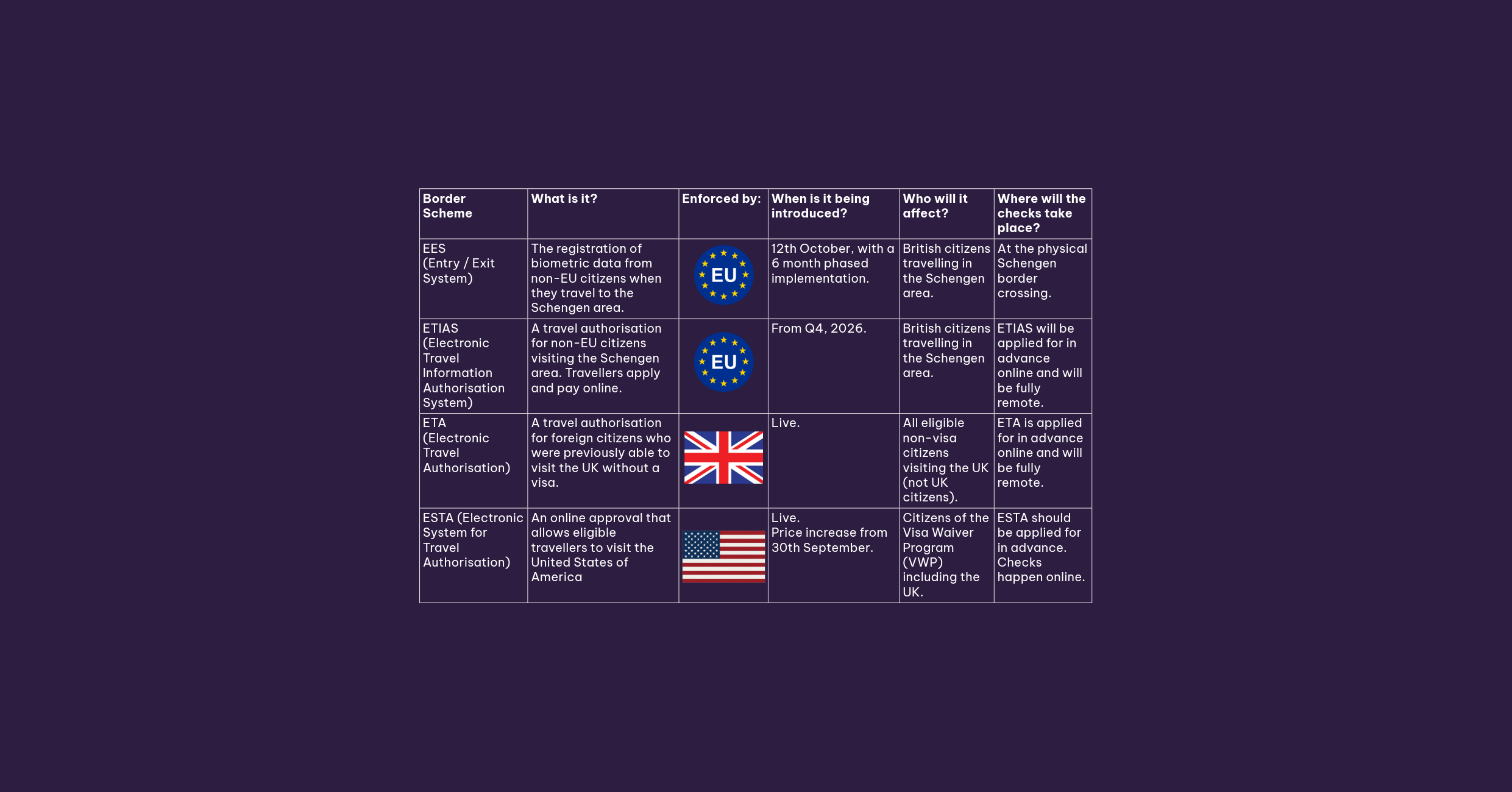


Talk to an Inntel expert



Keeping up with changing travel rules can be challenging — especially when different schemes apply depending on your destination. For business travellers, the introduction of new systems like EES and ETIAS, alongside the already-live UK ETA and ESTA, means there are now more steps to consider before you go. Whether you’re managing frequent business travel or planning a one-off trip, understanding these changes now can help you avoid delays, denied entry, or unexpected admin later. With multiple schemes being introduced across the world, it’s important to know which rules apply, when they start, and what action you need to take before your journey.

As of 2nd April 2025, travellers from over 30 European countries have been required to obtain an Electronic Travel Authorisation (ETA) before entering the UK. The scheme was introduced to streamline entry for visitors who don’t need a visa.
Applications can be made via the official ETA app or UK government website. The process is quick and straightforward. Initially priced at £10, the fee increased to £16 on 9th April 2025. Once granted, an ETA is valid for two years or until the traveller’s passport expires — whichever comes first — and allows multiple entries into the UK.
For the full details and to submit an application, head to the UK government’s official site.
The Entry/Exit System (EES) is the EU’s upcoming digital border control system for non-EU nationals, including British passport holders. It’s set to launch from 12 October 2025, with a six-month phased rollout.
EES will register travellers each time they enter or exit Schengen countries for a short stay (up to 90 days in any 180-day period). The system captures biometric data — such as fingerprints and facial images — and logs each crossing electronically at the physical border. It is designed to improve security, detect overstays, and streamline border checks across the EU.
Whether you need a visa or not, if you’re a non-EU national travelling to the participating countries, you’ll be registered in EES. Some exceptions will apply, but for most business travellers, this will become a standard part of entry into Europe.
ETIAS (European Travel Information and Authorisation System) is the EU’s upcoming pre-travel requirement for non-EU nationals – including British citizens – visiting 30 European countries in the Schengen Area. It is not yet operational, but is expected to launch in Q4 of 2026. No action is required from travellers at this stage.
Once live, ETIAS will be a quick, online application linked to your passport, costing €20. It will allow multiple short stays (up to 90 days in any 180-day period) and remain valid for three years, or until your passport expires.
ETIAS is not a visa, but an electronic authorisation designed to assess security and immigration risks before travel. While most applications will be processed in minutes, some may take up to 30 days, so it’s recommended to apply well in advance of travel.
Travellers must carry the same passport used for their ETIAS application. A valid ETIAS does not guarantee entry — border officials will still verify eligibility on arrival.
An ESTA (Electronic System for Travel Authorization) is an online approval that allows eligible travellers to visit the United States of America. You are eligible to apply for an ESTA if you are a citizen of one of the Visa Waiver Program countries. Travellers must apply before arriving at a US border, and approval is required even for short stays.
US authorities have confirmed that the ESTA fee will rise from $21 to $40 on 30th September 2025, and any unpaid applications in the system after this date will be charged the higher amount. To avoid paying more, travellers planning a trip to the US in the next two years should submit their application before 29th September 2025 through the official ESTA website or mobile app.
See below for a side-by-side comparison of EES, ETA, ETIAS and ESTA:

If you have any further questions you can speak to a member of our Business Travel team via:
Telephone: 0344 847 5504
All information was accurate at the time of publication. However, timeframes and details may be subject to change as developments progress.